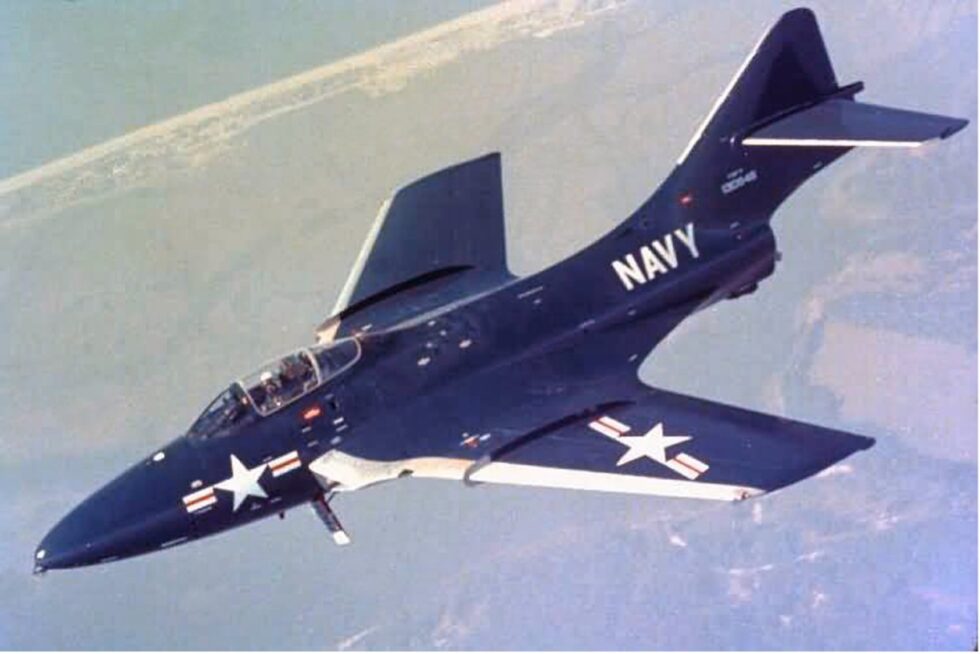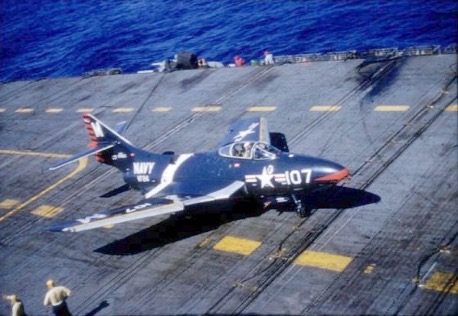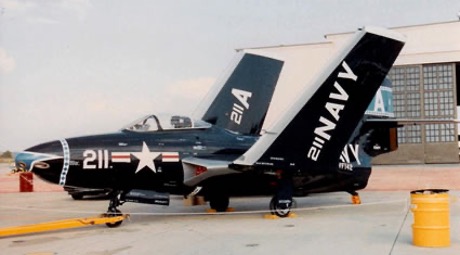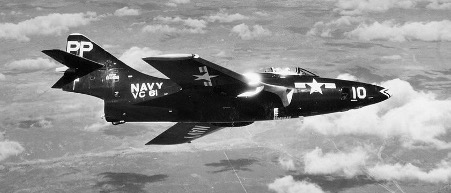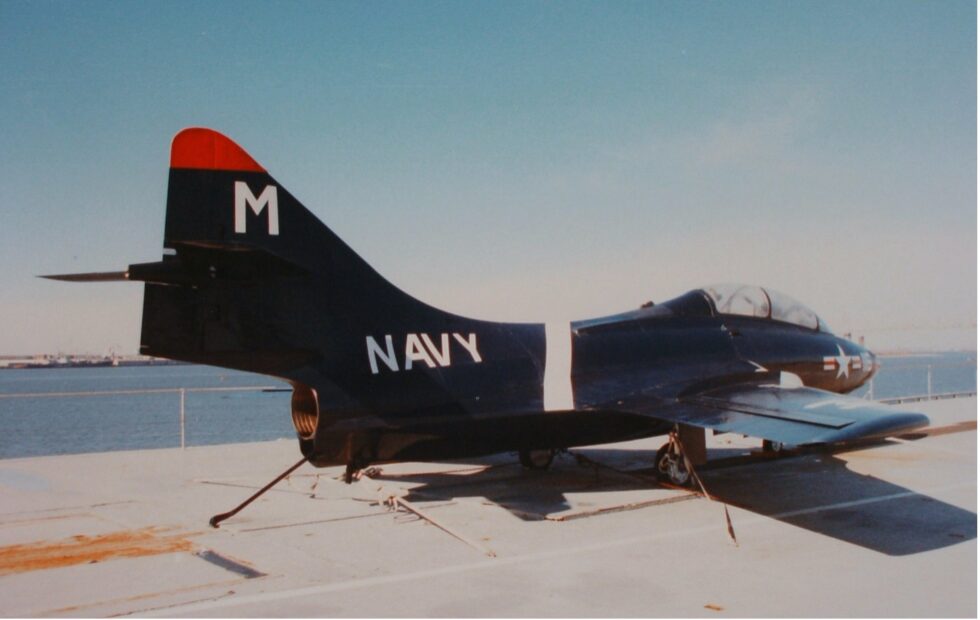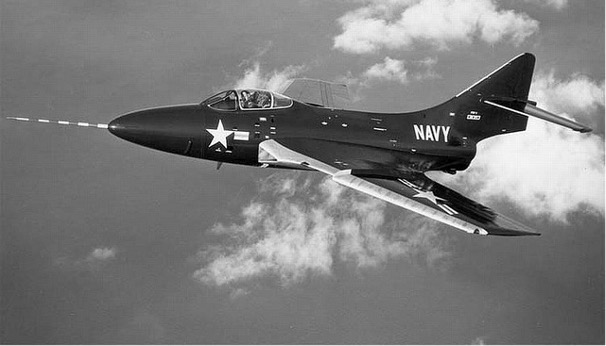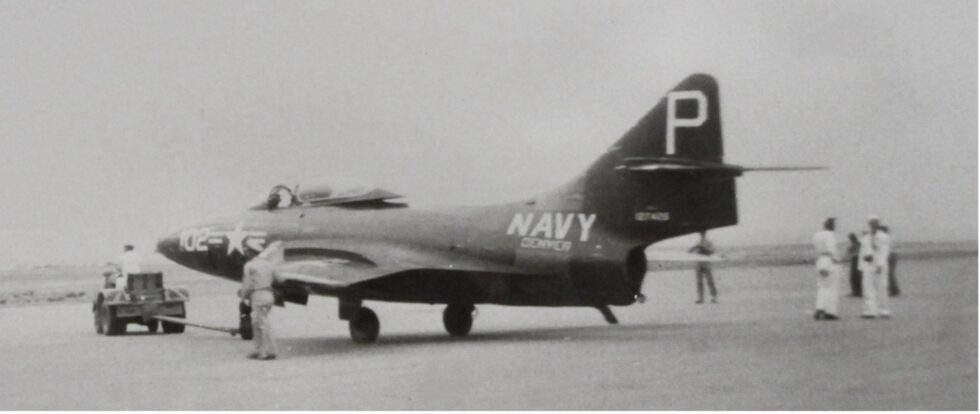USN NASWF Grumman F9F-6 Cougar
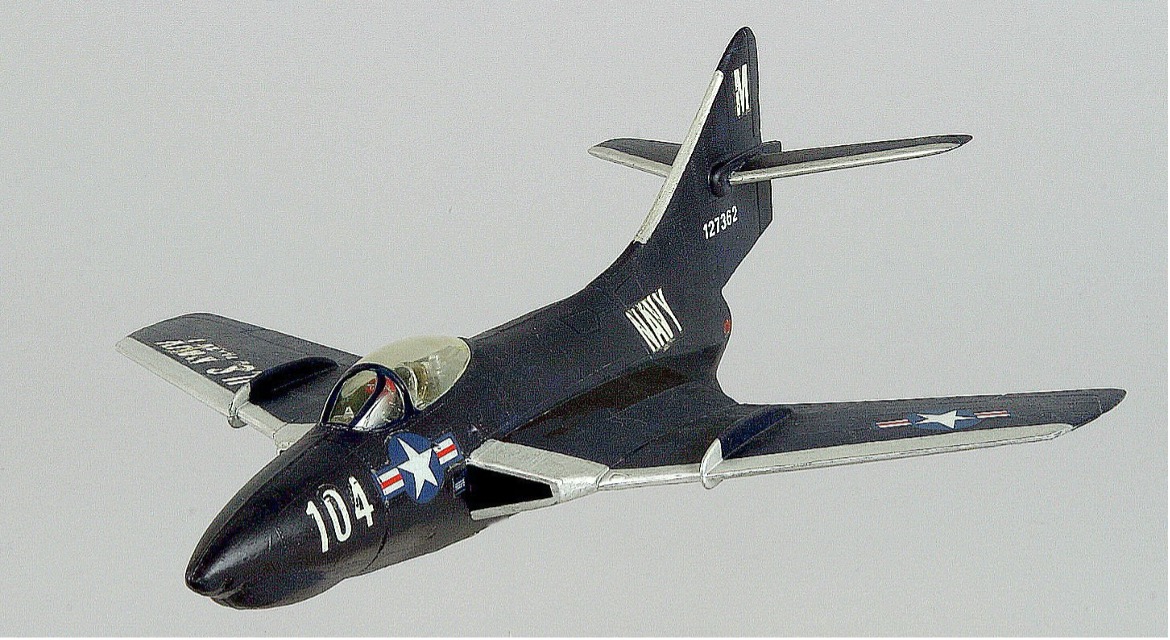
MODEL BY:
B. Phillips & N. Melvin
Model Scale:
1/48
MODEL ADDED:
10/30/1965
historical significance
First Albuquerque Visit: 1952
Additional Information:
The Grumman F9F/F-9 Cougar is a carrier-based jet-powered fighter aircraft. It was developed during the early 1950s on behalf of the United States Navy and United States Marine Corps, which were keen to quickly introduce a naval fighter equipped with a swept wing. Grumman’s design team decided to adapt its earlier F9F Panther, replacing the straight wing of the Panther with a new swept wing. Thrust was also increased with the installation of a newer and more powerful engine, nevertheless, the aircraft remained limited to subsonic speeds. The Navy considered the Cougar to be an updated version of the Panther, despite having a different official name, and thus Cougars started off from F9F-6.
The F9F-6 was introduced to service during December 1952. While developed at a relatively rapid pace, the Cougar’s arrival was too late for it to engage in active combat during the Korean War. The US Navy’s flight demonstration team, the Blue Angels, adopted the type in place of its Panthers. The Cougar gained a favorable reputation as a highly maneuverable and easy to fly aircraft.
Albuquerque’s Kirtland Field was designated Kirtland Air Force Base in 1947, and the Armed Forces Special Weapons Project (AFSWP) operated on Sandia Base. When the United States Air Force established the Air Force Special Weapons Command at Kirtland Air Force Base in 1949, the United States Navy formed a detachment to investigate nuclear capabilities for naval aircraft and assist the AFSWP with naval equipment for demonstrations and training. The Naval Weapons Evaluation Facility (NWEF) operated through the Cold War investigating aircraft-weapon interfaces to provide United States Navy aircraft with nuclear weapons delivery capability.
In 1952 this detachment was designated the Naval Air Special Weapons Facility (NASWF) to conduct special weapons tests on the White Sands Missile Range and Tonopah Test Range in coordination with the United States Atomic Energy Commission. In March of 1961, the NASWF was re-designated the Naval Weapons Evaluation Facility (NWEF) and its mission was expanded to include safety studies on nuclear weapons. The aircraft used for NWEF testing were decorated with the NWEF thunderbird symbol and the NWEF detachment became known as the Rio Grande Navy by its sailors and civilians.
In 1992, with the consolidation of many naval activities and the drawdown of the U.S. defense budget, NWEF became part of the large, multisite Naval Air Warfare Center Weapons Division in China Lake. In 1993 the NWEF was decommissioned and became the first nuclear-weapons-related facility in the Free World to be shut down. As NWEF closed, it transferred some of its remaining people and functions to the China Lake site.
The Grumman F9F-6 Cougar, Bu No. 127362, received atomic weapons suitability testing at the Naval Air Special Weapons Facility (NASWF) at Kirtland Air Force Base in Albuquerque, New Mexico in 1952.
GALLERY:
SEARCH OUR DATABASE:

